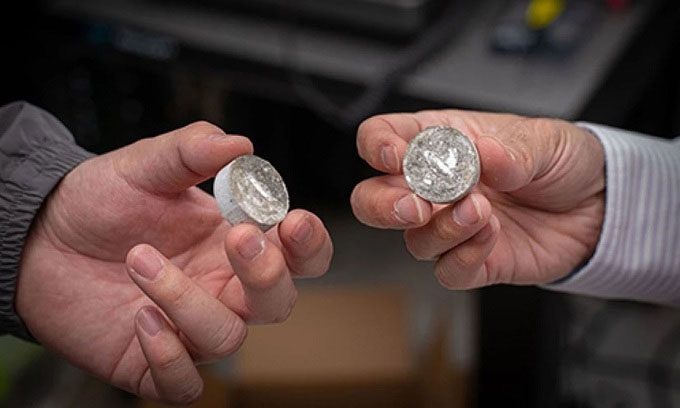Researchers have developed a new self-healing concrete containing enzymes found in the human body that can extend the lifespan of structures by 20 to 80 years.
Small cracks that form in concrete are not an immediate threat to the structural integrity of a building, but water infiltrating these cracks and their gradual expansion over time can significantly reduce sustainability. The idea behind self-healing concrete is to intervene in this process while the cracks are still small, sealing the material to prevent the risk of collapse and reducing costly maintenance or the complete replacement of the structure.

Self-healing concrete specimen. (Photo: Worcester Polytechnic Institute).
In a study published in the journal Applied Materials Today, scientists at Worcester Polytechnic Institute in Massachusetts, USA, found a cheaper and more effective solution inspired by the human body, specifically the way carbonic anhydrase (CA) enzymes in red blood cells rapidly transport CO2 from cells into the bloodstream. “We examined the nature of what drives the fastest CO2 transport, and that is the CA enzyme,” said Nima Rahbar, co-author of the study. “Because enzymes in the body react surprisingly quickly, they can become an effective mechanism for healing and reinforcing concrete structures.”
The research team added the CA enzyme to the concrete powder before mixing and pouring the material. When a small crack forms in the concrete, the enzyme interacts with CO2 in the air to produce calcium carbonate crystals, mimicking the properties of concrete and quickly filling the crack.
Through testing, the scientists demonstrated that the new type of concrete can self-heal cracks up to several millimeters long within 24 hours. The research team noted that this is a significant improvement over previous technologies that used bacteria for healing, which were more expensive and took up to a month to repair much smaller cracks.
Although the amount of CO2 absorbed by the concrete is not significant, the true environmental potential of the material lies in its durability. Rahbar predicts that this self-healing technology could increase the lifespan of structures by 20 to 80 years, reducing the need for the production and transportation of replacement concrete.




















































